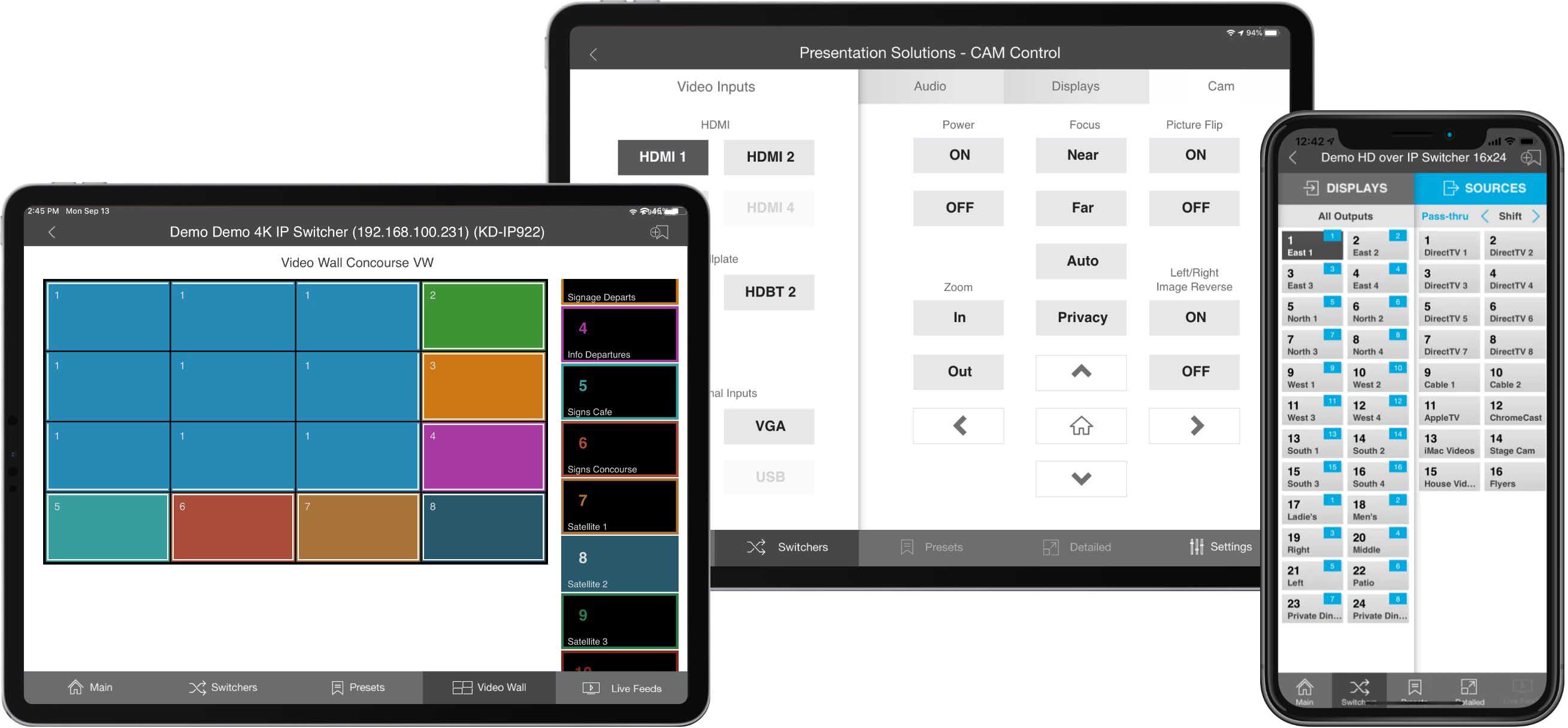
SCN: Before Key Digital, you created some rather significant technologies for the video industry. Which of your contributions would you say have been the most significant?
Mike Tsinberg: I think the three technologies of most significance are:
1. Proposal to broadcast TV digitally. This allowed HDTV compatibility—the HDTV digital RF signal could be added alongside standard analog TV broadcast of NTSC video.
2. Standardization on MPEG-2 compression for HDTV digital broadcasting. This allowed high-quality HDTV video and sound to be broadcast within the standard 6 MHz bandwidth of RF spectrum allocated as guard channels to an analog TV station, and opened up the opportunity to deliver the identical digital MPEG-2 HDTV signal via many different physical real-time or storage mediums: cable, satellite, OTA, disk, tape, and the then fledgling internet networks. Previously, in the analog TV world, each of the medium distribution channels required its own signal formatting and modulation methods.
3. Working together with Toshiba and Warner Brothers to create the Emmy award-winning DVD format. This was another implementation of universal MPEG-2 compressed video, but in this case on a low-cost, high-quality, easily distributed consumer storage medium. DVD was the most successful physical consumer video and audio storage medium of all time, and it opened the door for streaming video content over the internet, the now dominant TV delivery technology.
[Executive Q&A: Right on Track]
SCN: How is Key Digital celebrating its 25th anniversary?

MT: We have noted the milestone with an anniversary logo and a refresh of our timeline of accomplishments. But honestly, day-to-day, we know the way that we can thrive for another 25 years is to continue to innovate and solve problems for our customers. It’s our passion and focus. We truly delight in brainstorming about how we can apply new technologies. We continue to refine our products and develop software tools for configuration and control. We have been releasing second and third-generation versions of many of our foundational products such as our modular, scalable AV-over-IP systems, multiviewers, and extenders. We’ve just introduced a new wireless HDMI extender that leverages 5G technology and figured out a way to apply it as a wireless distribution amplifier. And there’s a hub coming for our wireless presentation gateway that is an all-in-one BYOD collaboration system.
[Viewpoint: Exploring the 5 Pillars of the New Workplace Paradigm]
SCN: What made you decide to establish Key Digital in 1999?
MT: After helping to create the very successful HDTV and DVD formats with CE giants Philips and Toshiba, the time felt right to build a team and apply my experience and ideas to opportunities and markets that were emerging in digital video connectivity for the commercial and consumer installation markets.
SCN: Your first product was a custom video distribution amplifier for Best Buy’s display televisions. How did those early days and projects set the stage for Key Digital’s longevity?
MT: That first product was actually analog, since HDTV sets in those days had analog video inputs. However, the wide aspect ratio and crisp, clear images of HDTV were the basis for what promised to be a rapidly expanding HDTV and digital video market. With our knowledge and experience with digital video, the team we built at Key Digital was well-positioned to anticipate the needs of a developing market. As the market evolved, so did our products. We filled core needs but also provided solutions to connectivity and inter-device communication issues while providing bidirectional control along with signal distribution. We grew with the market through a commitment to meet customers where they live, recognize their needs, keep our solutions cost-effective, and be a true partner in their success.
SCN: Key Digital offers a Conference Room in a Box solution, but what are some of the unique tech challenges of today’s hybrid presentation spaces?
MT: COVID-19 changed the marketplace to where most any conference now consists of people present in the office as well as connected remotely via videoconference. The tech challenges include latency between interactive presenters, quality discrepancies between onsite and remote cameras and mics, enabling remote content sharing, and remote/local system control. COVID-19 also increased demand for physical distancing in the same room and hands-free products such as wireless gateways and wireless extenders. In general, customers are quickly getting used to clear 4K TV, which in turn opens commercial markets for 4K delivery via wired or wireless connectivity.
SCN: I think many of us almost take AV-over-IP for granted these days, but how much of a change does this technology represent for Pro AV workflows?
MT: Compared to CE use such as Zoom or Teams, or simply the distribution of signals, the most significant Pro AV requirement is for low compression delay, as compressed and uncompressed content needs to be displayed side by side. That is why we opted for low compression ratio and low latency Motion JPEG in our AvoIP systems. That’s transparent to the user. For the installer, using M-JPEG requires 1 Gbps IP switchers, though these switchers are now available at commodity pricing levels.

Building effective AVoIP systems around IP infrastructure demands comprehensive but easy-to-use software for configuration and control. That is why we developed a free iOS app that allows instant system control without programming. Though intuitive and simple to use, KD App delivers sophisticated control of large AvoIP installations including matrix switching and video walls. While we’ll setup factory shipped systems for free, our configuration software, KDMS Pro, allows integrators to spend minimal time to self-configure or reconfigure an AVoIP installation.
SCN: What do people often get wrong or fail to realize about AVoIP technology?
MT: First is the critical importance of reliability in encoders, decoders and IP switchers being used 24/7 at their maximum bandwidth. Second is the necessity of easy-to-use software for setup and system control. These are main differences between AVoIP and ordinary HDMI/HDBaseT systems. Software-centric IP technology, in general, has the same strong software requirements as AVoIP.
SCN: Currently, what are your busiest vertical markets, and what sort of solutions are you providing for them?
MT: Digital signage in retail stores and hospitality is a big market for us. Sports bars and restaurants are also keeping us busy. We have dedicated standalone processors for multiview and video wall applications, along with our AVoIP modular systems for matrixed signal delivery with integrated bidirectional device control and built-in processing for video walls, including mosaic video walls. Hybrid conference rooms are another large vertical, along with education, addressed with our Conference Room in a Box and Classroom in a Box solutions.
SCN: Between Key Digital University and other resources, education is clearly an important focus for Key Digital. Why the emphasis on education?
MT: A knowledgeable integrator creates better quality installations with happier end users and, as a result, creates more business for their company as well as for the manufacturer. Plus, the better our customers understand the technology, the more they can appreciate how Key Digital products not only intelligently solve problems but anticipate and prevent many problems from popping up.
SCN: What new initiatives are we likely to see from your company?
MT: We’ll be expanding wireless gateway capabilities plus adding USB-C connectivity and switching for various scenarios. We will also continue to improve a very successful AVoIP lineup as the backbone of functionally and visually impressive installations. Since our R&D is all U.S. based, we are in close contact with our customers and eager to implement ideas from the field. One example is our pushbutton keypad, KD-WP8-3, which includes open API control functionality and is very popular as an accessory for control systems such as Q-SYS.
SCN: What’s next for the Pro AV industry?
MT: First, digital signage will continue to grow as a market segment and become an integral and fluid part of any new building construction, be it government, commercial, or residential. Second, with the ever-increasing complexity of commercial AV systems, software control tools and their ease of implementation of use is becoming a key differentiator between brands. Along with the KD App and KDMS Pro, Key Digital has pioneered the unified control of lighting, security, electrical, HVAC, and other technologies with its iPad-based Compass Control Pro plug-and-play solution for complete system control, spanning products from 100-plus Compass Alliance Partner brands.







